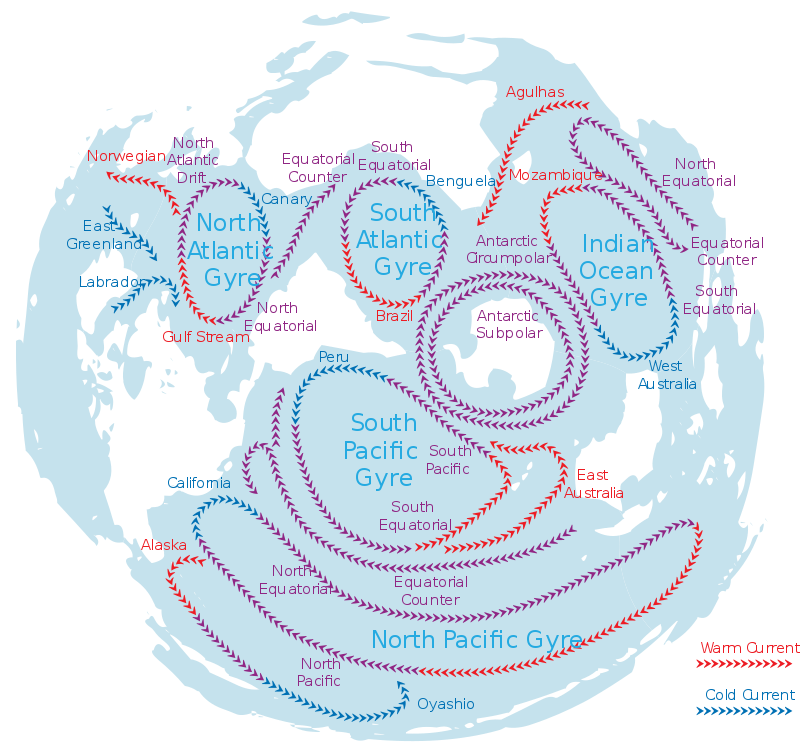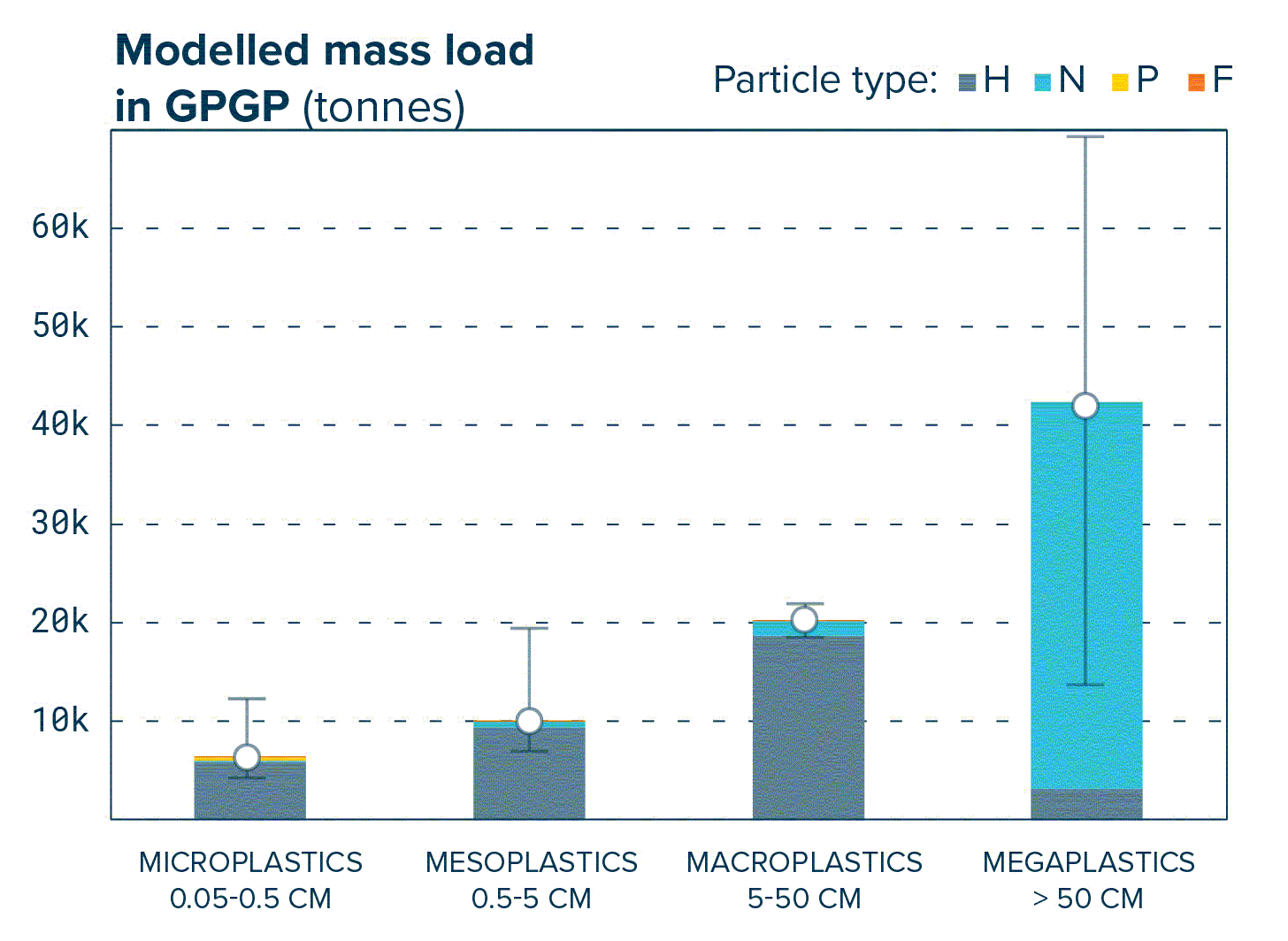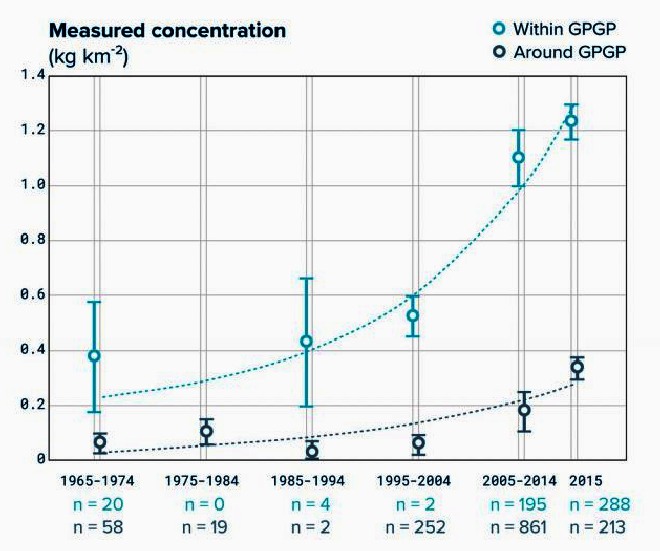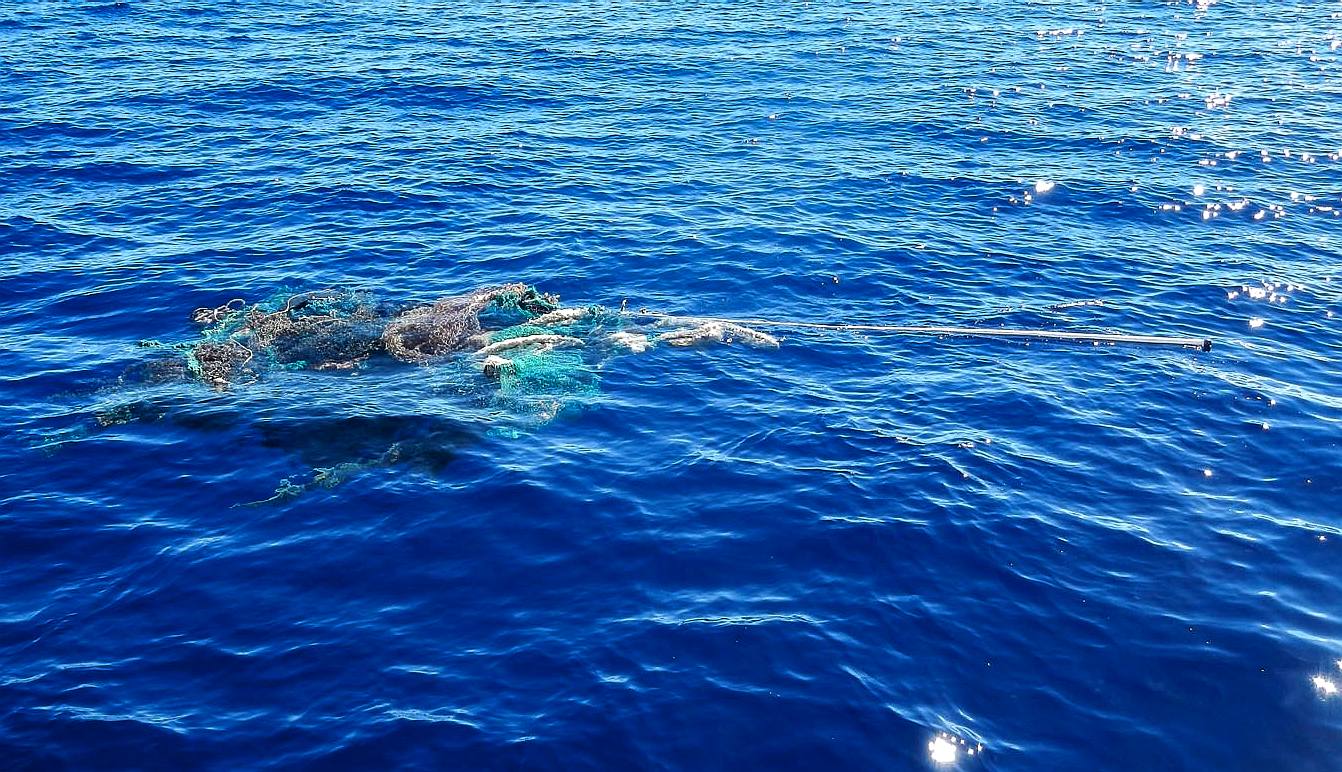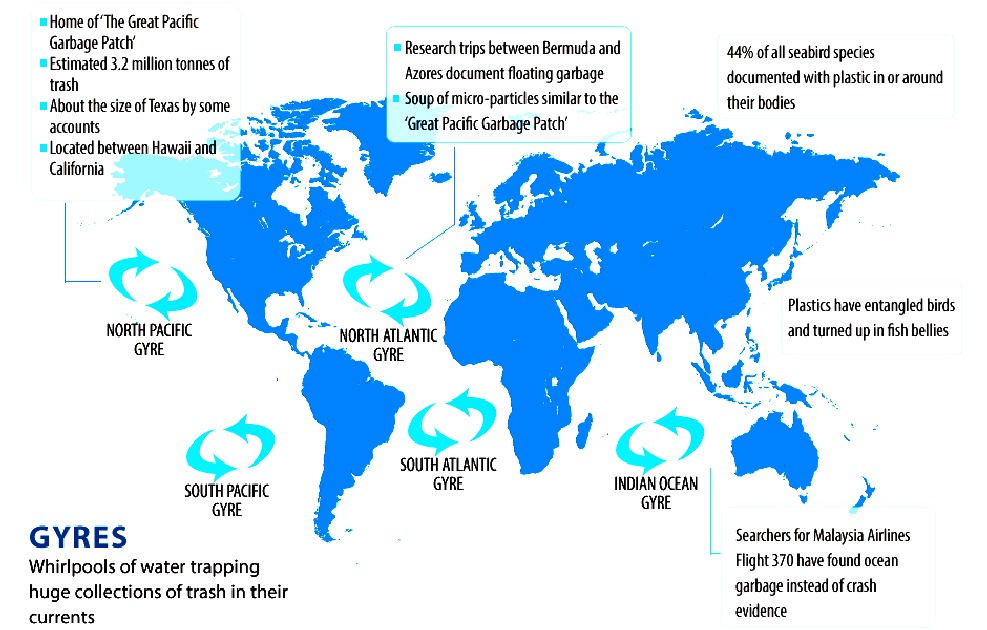|
GYRES PACIFIC GARBAGE PATCH PLEASE USE OUR A-Z INDEX TO NAVIGATE THIS SITE
|
|
There are 5 swirling ocean garbage patches called gyres. Garbage patches generally accumulate far from any countrys coastline, and it is nearly impossible to track the origin of marine debris. The tiny plastic particles that make up most of the patches are also very difficult and expensive to detect and remove.
6. Arctic Ocean
BUT WHAT TYPES OF PLASTIC & HOW MUCH FLOATS IN THE GREAT PACIFIC GARBAGE PATCH?
Characteristics of the debris in the
Great Pacific Garbage
Patch, such as plastic type and age, prove that plastic has the capacity to persist in this region.
SIZE
CLASSES
Microplastics (0.05 0.5 cm)
However, in terms of object count, 94% of the total is represented by microplastics. 46% of the total mass is made of fishing nets.
CATEGORIZATION
TYPES
Type F: Fragments made of foamed materials Type H: Hard plastic, plastic sheet or film;
LINKS & REFERENCES
https://www.worldatlas.com/articles/what-is-the-great-pacific-garbage-patch.html
|
|
|
ABS - BIOMAGNIFICATION - CANCER - CARRIER BAGS - COTTON BUDS - DDT - FISHING NETS HEAVY METALS - MARINE LITTER - MICROBEADS - MICRO PLASTICS - NYLON - OCEAN GYRES - OCEAN WASTE PACKAGING - PCBS - PET - PLASTIC - PLASTICS - POLYCARBONATE - POLYSTYRENE - POLYPROPYLENE - POLYTHENE - POPS PVC - SHOES - SINGLE USE - SOUP - STRAWS - WATER
|
|
|
This website is provided on a free basis as a public information service. copyright © Cleaner Oceans Foundation Ltd (COFL) (Company No: 4674774) 2019. Solar Studios, BN271RF, United Kingdom. COFL is a company without share capital.
|
